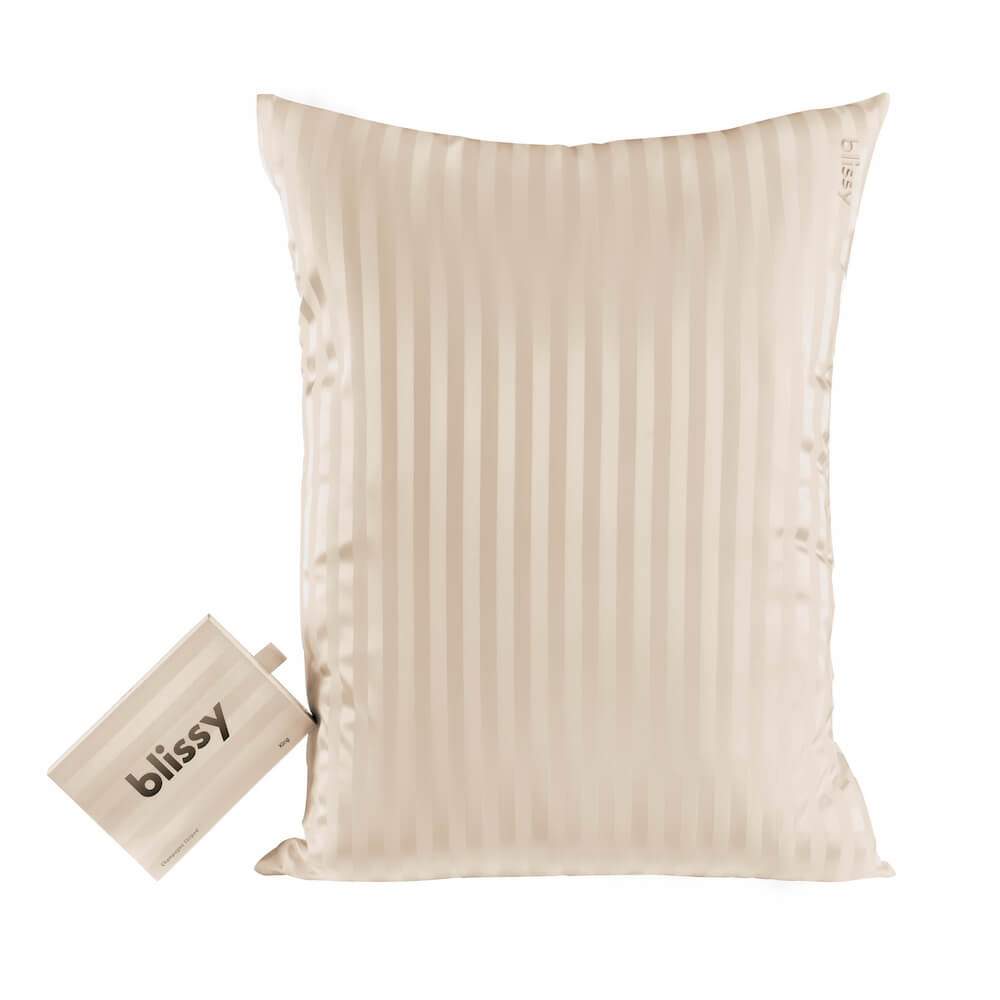Satin pillowcases, robes, and other items might seem to offer a soft texture and glossy surface that’s appealing. But you might not be getting what you think you’re getting in terms of quality. In fact, satin can even be harmful as far as eco-friendliness goes.
What’s in a name? When it comes to satin, looking beyond the name is important. Products marked as “satin” are often made from synthetic fabrics rather than natural ones, like silk.
Is satin polyester? It can be, which helps explain its shortcomings, such as its environmental impact and shorter lifespan. Let’s explore what satin is and why it’s not the best choice for linens and other products.
What Exactly Is Satin?
Satin isn’t its own fabric. Instead, it refers to the weave. Did you know that satin can be made from different kinds of materials? This includes natural materials and synthetic fibers.
Some satin products are made of silk, which is natural. Others are made from polyester or other synthetic materials.
How do you know what you’re getting when you buy satin products? Items marketed as “satin” without any mention of silk are typically made from synthetic materials, especially polyester.
How Satin Is Produced
A satin weave creates a smooth and shiny material for bedding and other products. What does this process look like? Satin is typically woven from four or more threads that wrap around one main weft thread or warp thread.
Back in the Middle Ages, silk was woven into satin weaves all along the Silk Road. Over the years, satin weaving techniques expanded. Satin today is widely produced using polyester, rayon, and other materials.
Features of Satin
Satin fabric, including polyester satin, is known for having a few positive features. It's a shiny fabric that catches the eye, so it's often used for clothing, evening bags, and similar items.
Satin's long filament fibers also produce a smooth texture for bed linens and other products.
A satin weave usually costs less than natural materials, such as pure silk, when it's made from polyester or another synthetic fabric.
Satin’s Drawbacks

Despite its positive features, satin fabric has some disadvantages. These drawbacks are enough to make polyester satin weave a less favorable option for pillowcases, bed sheets, t-shirts, and other products.
Environmental concerns
Satin that's made from polyester comes with serious environmental concerns. Polyester fabric creates pollution while it's produced. It also sheds microplastics while it's worn and usually ends up in landfills. This all contributes to polyester's negative impact on the environment.
Comfort concerns
Polyester fabric isn't quite as comfortable as natural fabrics. It's not much of a breathable fabric compared to silk and other natural materials. This can make it a bad choice for clothes, bedding, and other products.
Durability and care
Although polyester fabric can be durable, it's not as long-lasting as a natural material, like silk. Polyester satin can snag easily, which can shorten its lifespan. This type of weave might not offer as much smooth softness as a silk satin weave either.
Natural vs. Synthetic Satin
How do synthetic satin weaves, such as polyester satin, compare to a natural silk satin weave? While both are considered satin, the two fabrics have some notable differences.
Polyester is a synthetic fiber that isn't as soft as a silk satin weave. Silk fibers also give satin a more lustrous finish, while polyester satin has more of a dull finish in comparison.
Silk satin is a type of weave that lasts longer than polyester, while also having more of a positive ecological impact. This satin weaving technique can create an incredibly durable product.
Shopping for Satin? Consider Other Fabrics Instead
How do you know what type of satin weave you're really getting? Always check labels to see how it's described. Look for some indication that silk was used, such as "silk" or "momme."
You can also tell by the feel of the material. Polyester satin has a shiny finish and glossy texture that's more slippery than smooth. The reverse side usually feels stiffer or harder. For comparison, silk feels smooth on both sides.
Instead of satin polyester, consider other fabrics. Natural fiber, such as pure silk, offers a more eco-friendly, comfortable, and durable option with a soft, luxurious feel. Consider silk pillowcases rather than polyester satin ones, for example. Silk offers skin and hair benefits, along with better sleep.
Whether you're shopping for clothes, bed sheets, or other items, think about your personal needs and larger considerations, such as environmental impact.














































